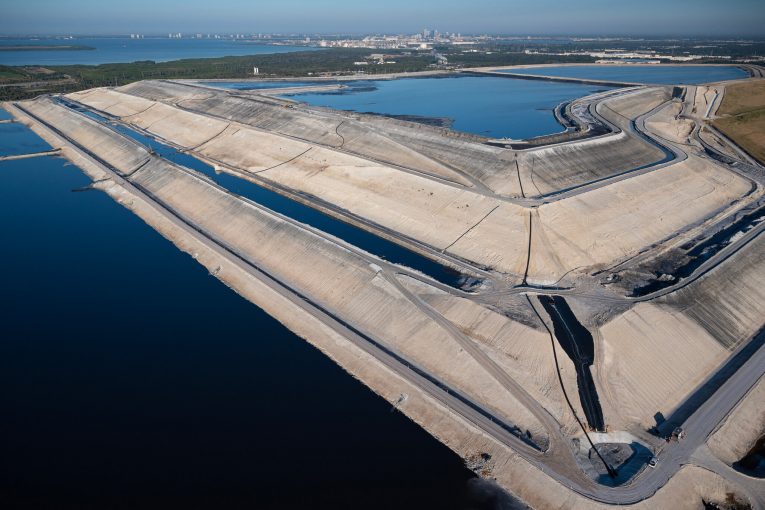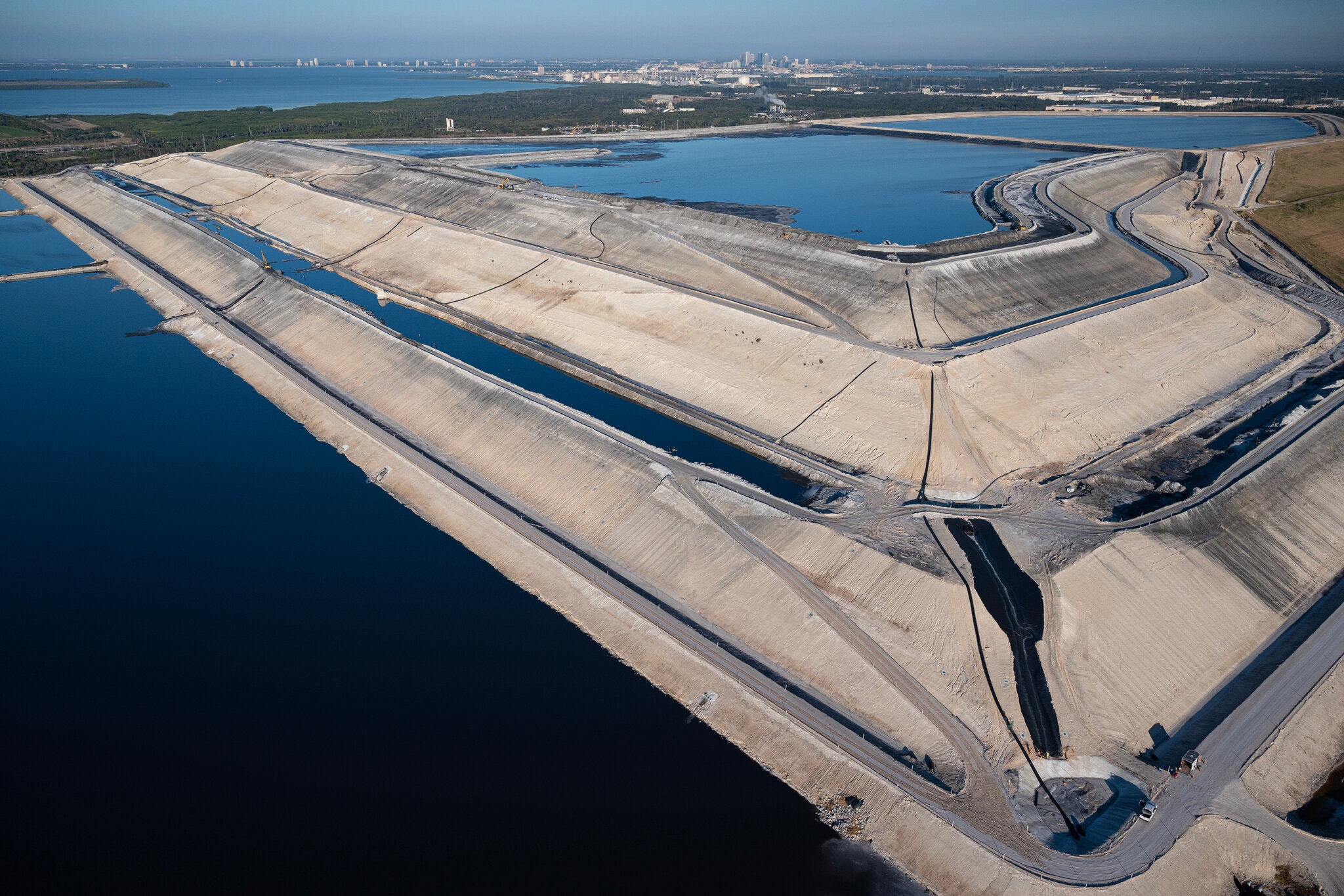
 By Jacob Vito
By Jacob Vito
There’s a creek near my house in Pittsburgh, a town steeped in years of mining and heavy manufacturing. It’s called Scrubgrass run, and it feeds into the Chartiers creek, which then works into the Ohio and Mississippi rivers. A park has been set up around it, and it harbored a whole multitude of environmental diversity in fish and plants. Well, at least it used to.
Scrubgrass run was also next to one of the countless iron mining operations throughout western Pennsylvania and acted as an accessible dumping site for the project’s waste. The water through the area is a murky brownish-red. Some nearby pools are even worse, entirely colored with iron rust. If anything lived in that water, it’s long dead now.
Whether they’re from mining, chemical manufacturing, energy production or something else entirely, an immeasurable number of ponds and creeks just like those in Scrubgrass are all across America. Due to the dangerous materials and chemicals inside them, these bodies of water can act like miniature time bombs for impeding the progression of local environmental health. And just this week, one came dangerously close to going off.
A Floridian waste pool containing 400 million gallons of toxic water nearly collapsed this week, prompting the evacuation of many local residents. And though the immediate threat posed by a spill from the former phosphate plant’s dumping ground may have passed, the risks posed by age and poor treatment have not yet gone away.
Though initial reports of the pond’s leak began two weeks ago, concerns escalated last Saturday as rapid growths in the breach pushed out water at a rate of 2-3 million gallons per day. If the retaining walls were to collapse entirely, local communities would have been swept up in a wall of water 20 feet high.
Thankfully, such a situation has been avoided. Due to pumping much of the pool’s water towards a release point in Tampa Bay, the water’s height could be lowered, and the threat of a breach in that pool ended.
Still, the situation is far from complete. Though the considerable danger might be gone, the waste pool still requires extensive repair and strengthening, as do the other nearby collections, which hold large amounts of wastewater as well. There is still much work to be done to keep these retention pools safe.
However, these are far from the only contaminated water sites in America. This isn’t just a Florida or Pennsylvania issue. These are everywhere, and as with much of America’s infrastructure, they are dangerously close to falling apart.
Across the country, thousands of reservoirs, pools and streams act as dumping sites for many chemicals and byproducts, from sulfur and nitrogen to coal ash to radioactive materials. Often hastily created by nearby companies, such areas act as sites to offload illegal materials to simply dump and are too expensive to deal with cleanly.
And together with the countless crumbling bridges and collapsing dams, these sites act as a dangerous reminder: America is falling apart through neglect.
It’s been going on for decades now. Governments, local, state and national, have spent years trying to cut spending for a more balanced budget, and the lack of excitement that repair usually brings often leaves it on the chopping block. And since the effects of their budget cuts would not be felt for decades, the policy leaders removing that funding in the first place would be unlikely to receive any backlash.
This has led to wide-reaching failures in American infrastructure that began years ago but have only recently been felt. How this deterioration occurs causes the collapses we have started to see to become more costly and occur more often in more vital areas of the country.
A single tunnel collapsing in New York could shut down millions of people’s rail access to the city. A few too many years of unchecked sediment deposits could make the Mississippi River delta unusable by large ships. Tons and tons of nuclear waste lie unprotected in local power plants, piling up after talks about a national storage facility in Yucca Mountain stalled years ago.
Billions of dollars rest on the continued stability of places like these, areas where continuing to postpone necessary maintenance brings higher risks of a logistics, health or economic catastrophe. And as these situations continue to worsen through time alone, the question of “if” slowly becomes a “when.”
Now, sweeping infrastructure bills have been spoken about for decades. While the Biden administration has begun talks about a new repair plan, the 2 trillion dollars it requests make it unlikely to leave the halls of Congress intact. And each day spent bickering over funding is another day that the transportation and infrastructure systems that helped make America one of the most prosperous nations in the world fall into decay. The clock is ticking.
Though it won’t necessarily be exciting, and it certainly will require both time and money, rebuilding America is a necessary task for everyone’s prosperity. After all, the United States can’t be a world-class country until it has the world-class infrastructure to make it so.

Jacob Vito is a first-year Community and Regional Development major at UC Davis. He is from western Pennsylvania.
Support our work – to become a sustaining at $5 – $10- $25 per month hit the link:






Unfortunately too much of Biden’s bill has nothing to do with actual infrastructure. The Democrats are using infrastructure to fund other things besides what it should actually be used for.
I find it quite hilarious the Davis Vanguard is talking about the failing infrastructure of Pennsylvania when we really should be talking about if failing water infrastructure within the state of California. We are starving for water and there’s not one peep about building reservoirs throughout the state of California that would satisfy the thirst of the voting public of California.
The state of California has floated billions upon billions of bonds to construct reservoirs here in the banana Republic California but nowhere can you see a shovel in the ground building one why is that?
Here are some highlights (adapted from Reuters).
$650 BILLION FOR ROADS, RAIL, TRANSPORT
Highways, roads, bridges
Public transit, Amtrak
Airports, waterways, ports, ferries
Other transportation projects
Supply chains and rebates for electric vehicles
$650 BILLION FOR ‘HOME INFRASTRUCTURE’
Broadband, clean water, electric grid, and housing.
Replace 100% of the water-bearing lead pipes and service lines across the country.
Broadband access for rural Americans; retrofitting two million housing units, and veterans’ hospitals.
Upgrade and build new public schools via grants and bonds.
Cap and seal oil and gas wells and abandoned mines.
$400 BILLION FOR THE ‘CARE ECONOMY’
Fund home or community-based care for senior citizens and people with disabilities.
$580 BILLION FOR MANUFACTURING, TRAINING, RESEARCH
Investment in domestic semiconductor manufacturing
Research and development for clean energy
Incentives to create new jobs in coal communities.
FUNDING
Raise the U.S. corporate tax rate to 28% from the 21% set by the 2017 tax bill,
Eliminate fossil fuel industry subsidies and loopholes.
Establish a minimum tax on income companies use to report profits to investors.
It also includes this:
So, get ready for more battles – both infill and sprawl. You’d think that folks would have figured this out, by now.
(The latter due to Affordable housing developers joining forces with market-rate/sprawl developers. We’ve already seen an example of that, locally – and as promoted on the Vanguard.)
If you want to control rental costs – there’s an easy way to do so without this type of thing. In fact, California has already implemented a modest rent-control measure. 🙂
I have yet to see any calculation which shows that the nationwide population has increased by XX amount, requiring XX more housing units. For that matter, there’s a significant number of houses that are not even occupied, year-round.
It’s really more of an income vs. cost problem – especially in the CHEAPEST areas of the U.S.
https://www.forbes.com/advisor/mortgages/bidens-infrastructure-plan-earmarks-213-billion-for-housing-heres-how-hed-spend-it/
The US population increased from 308,745,538 to 328,239,523 between 2010 and 2019.
Here is California’s increase during that time period:
California has essentially stopped growing. You can see the slowdown in the graph that you posted, for the years preceding that.
For a period of time last year, it was actually “shrinking” in population.
As far as the U.S. is concerned, how many more people were added, compared to additional housing units built? (Note that housing units typically house more than one person.) Let’s see a comparison.
Again, from what I’ve seen – those struggling with rent are often in the same parts of the country with (both) the cheapest rent AND the fewest restrictions. Places like Cleveland.
Those are the places where the eviction moratorium is having the greatest impact (on both renters, and landlords). So, why isn’t the “build to affordability” working in places like that?